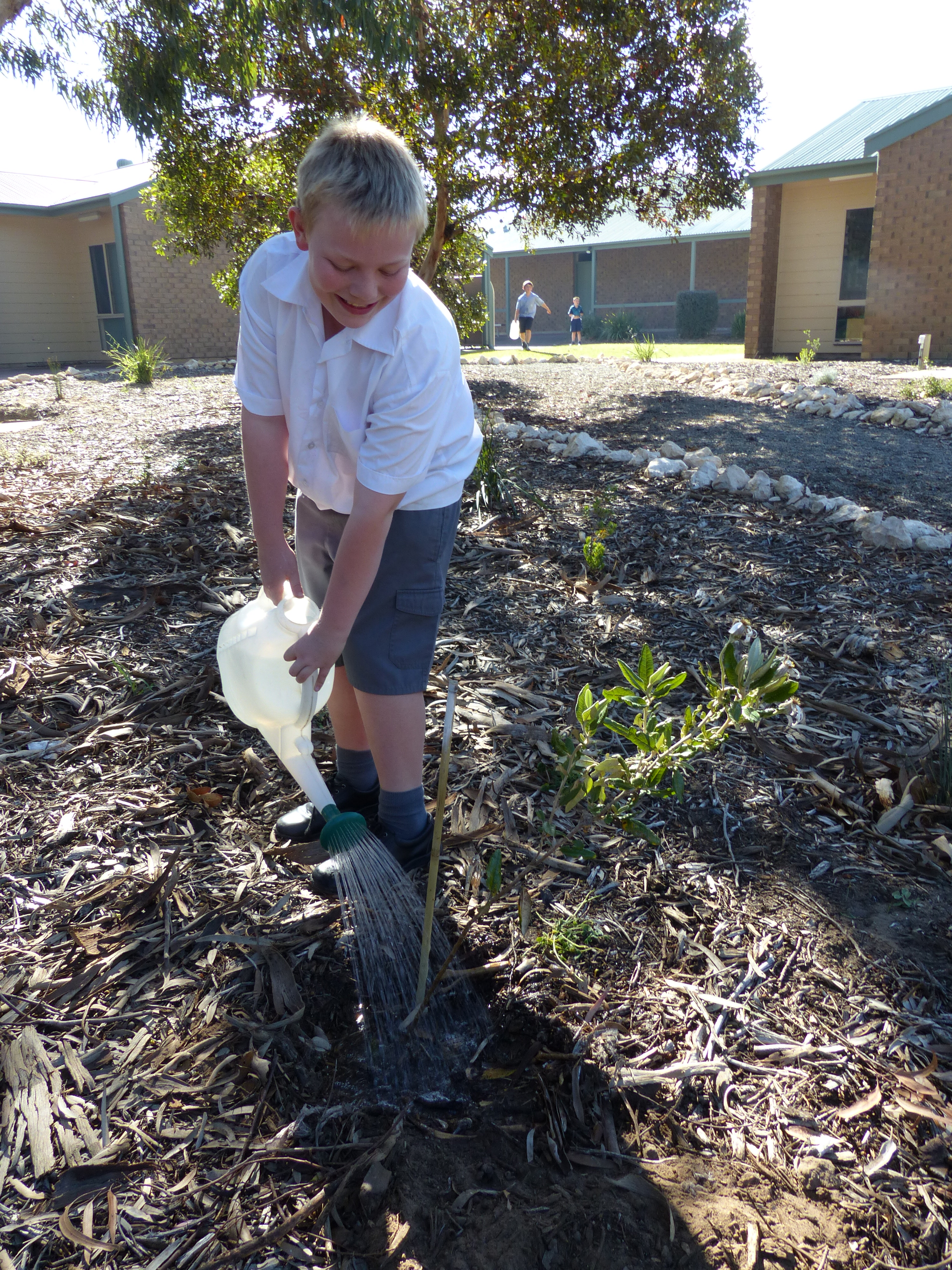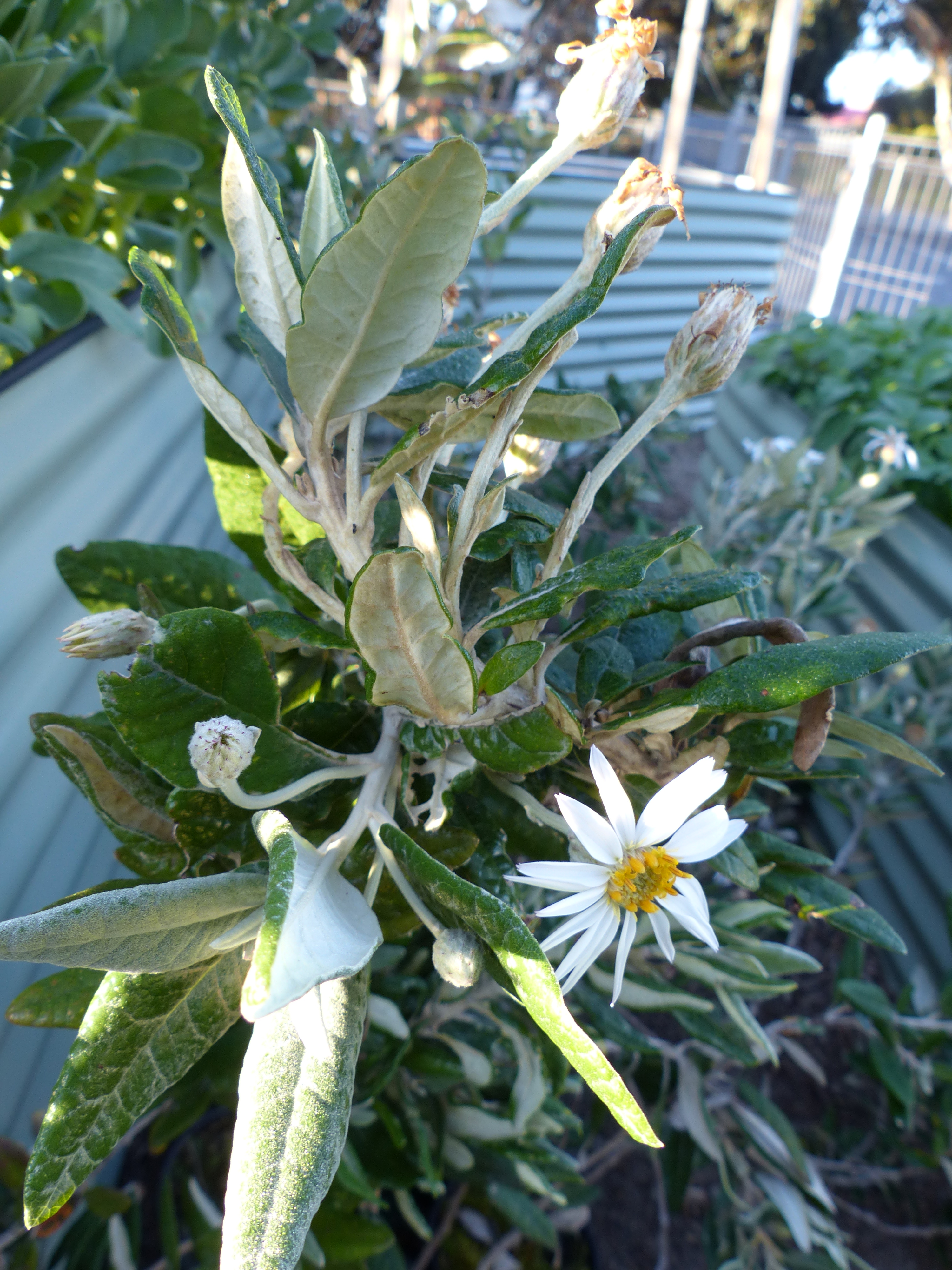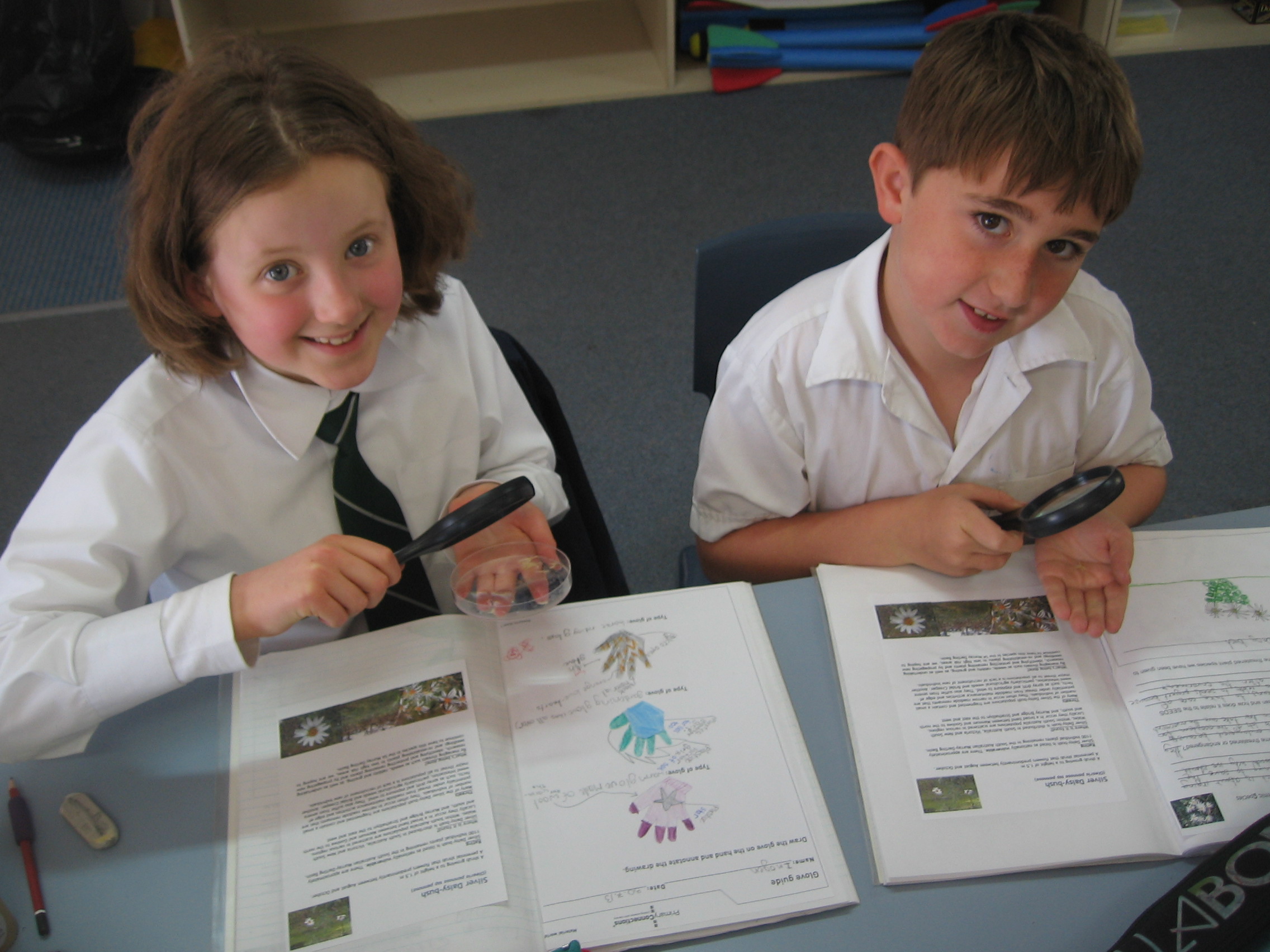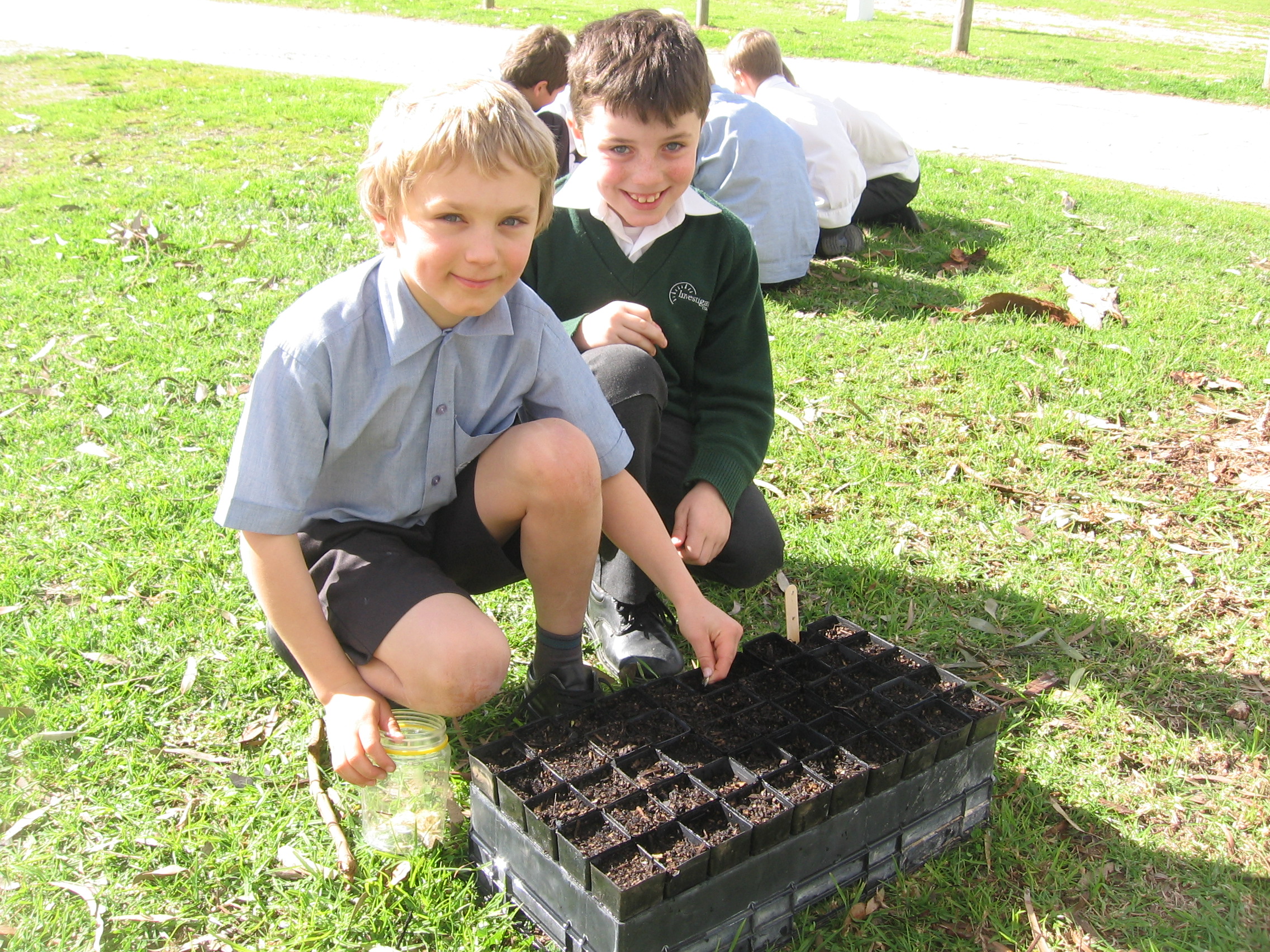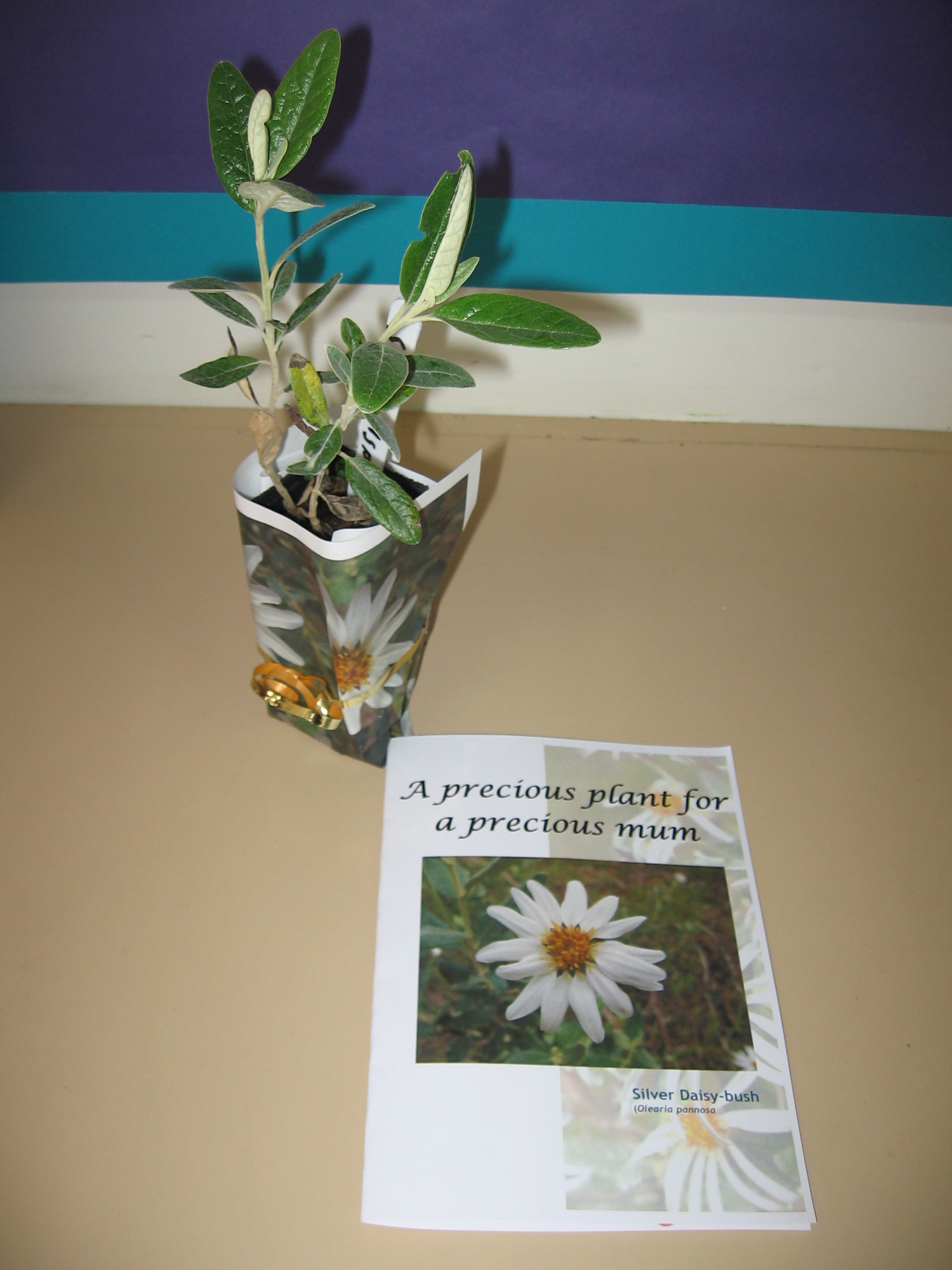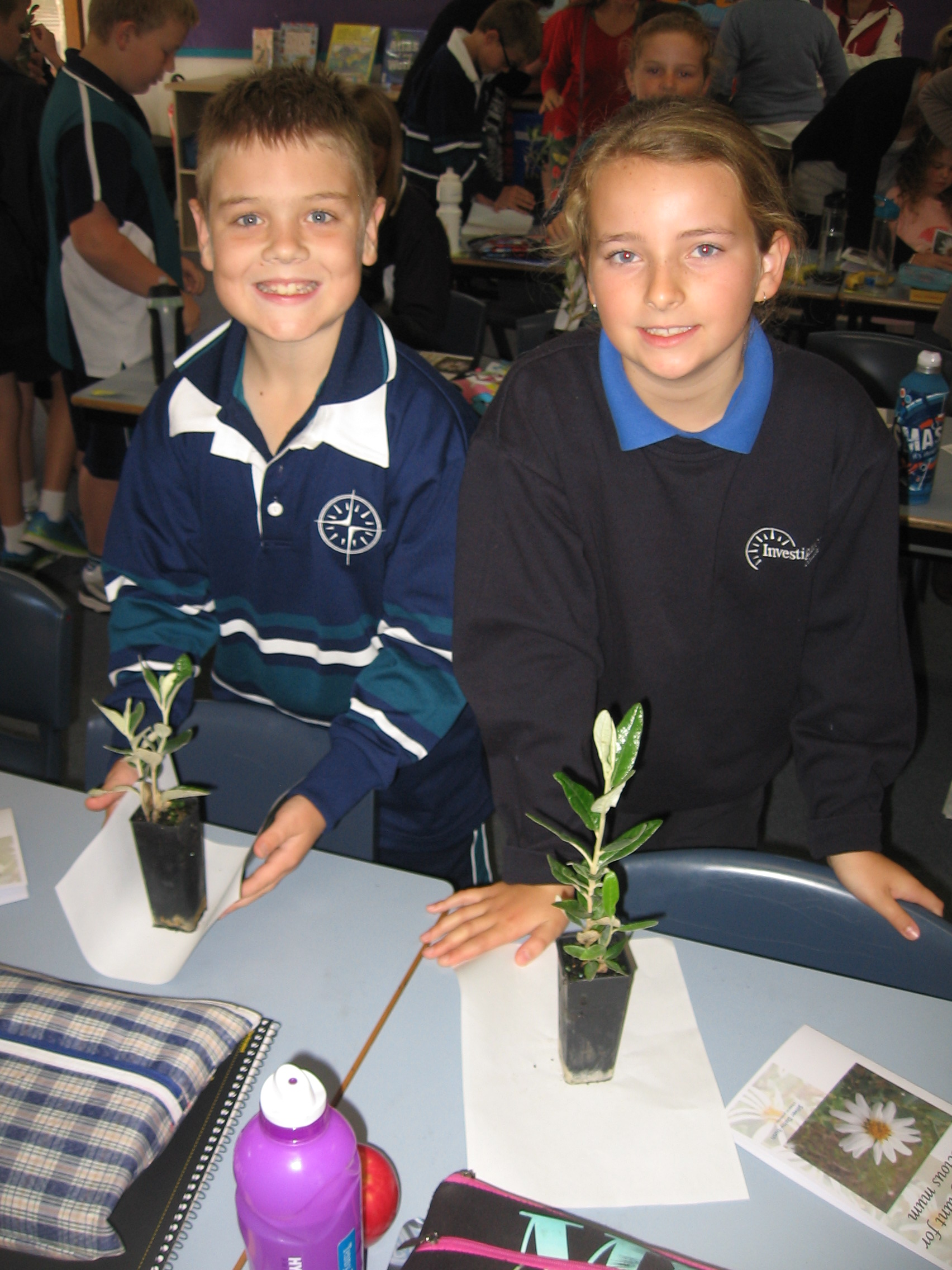

- Home
- Educator Led Programs
- Self-Guided
- SEEDS
- Christian Brothers College
- Cowell Area School
- Gilles Street Primary School
- Investigator College Victor Harbor
- Kildare College
- Kimba Area School
- Millicent High School
- Moonta Area School
- Mount Compass Area School
- Mylor Primary School
- Port Lincoln High School
- Quorn Area School
- Roma Mitchell Secondary College
- Tenison Woods College
- Urrbrae Agricultural High School
- Wilderness School
- Williamstown Primary School
- Wiltja
- About Us
- WED
- Unique Learning Experiences
- Professional Development
Year 4 Butterfly Garden
On Friday 19 September we started planting out a Butterfly Garden within our school grounds as part of the SEEDS program. We were given a range of rare plant species for this butterfly garden from Dan Duval, a scientist from theSouth Australian Seed Conservation Centre at the Adelaide Botanic Gardens. Included in these rare plant species are over 20 mature Olearia pannosa plants (Silver Daisy Bush) which is our focus plant for the SEEDS program. The established Olearia pannosa plants will become a seed bank which we can collect from and use for revegetation projects at our Currency Creek Eco-Centre.
Before planting out the different species, we spent some time in class learning about the local species of butterflies which we aim to attract to our garden. We also looked at the types of plants which provide nectar for the adult butterflies and most importantly the caterpillar food plants specific to each species of butterfly.
This is a long term project which we will continue to add plants to as we collect them over time. The aim of the garden is that it becomes a place where students can visit during Biological Science lessons and also continue to encourage the need for preserving our environment.
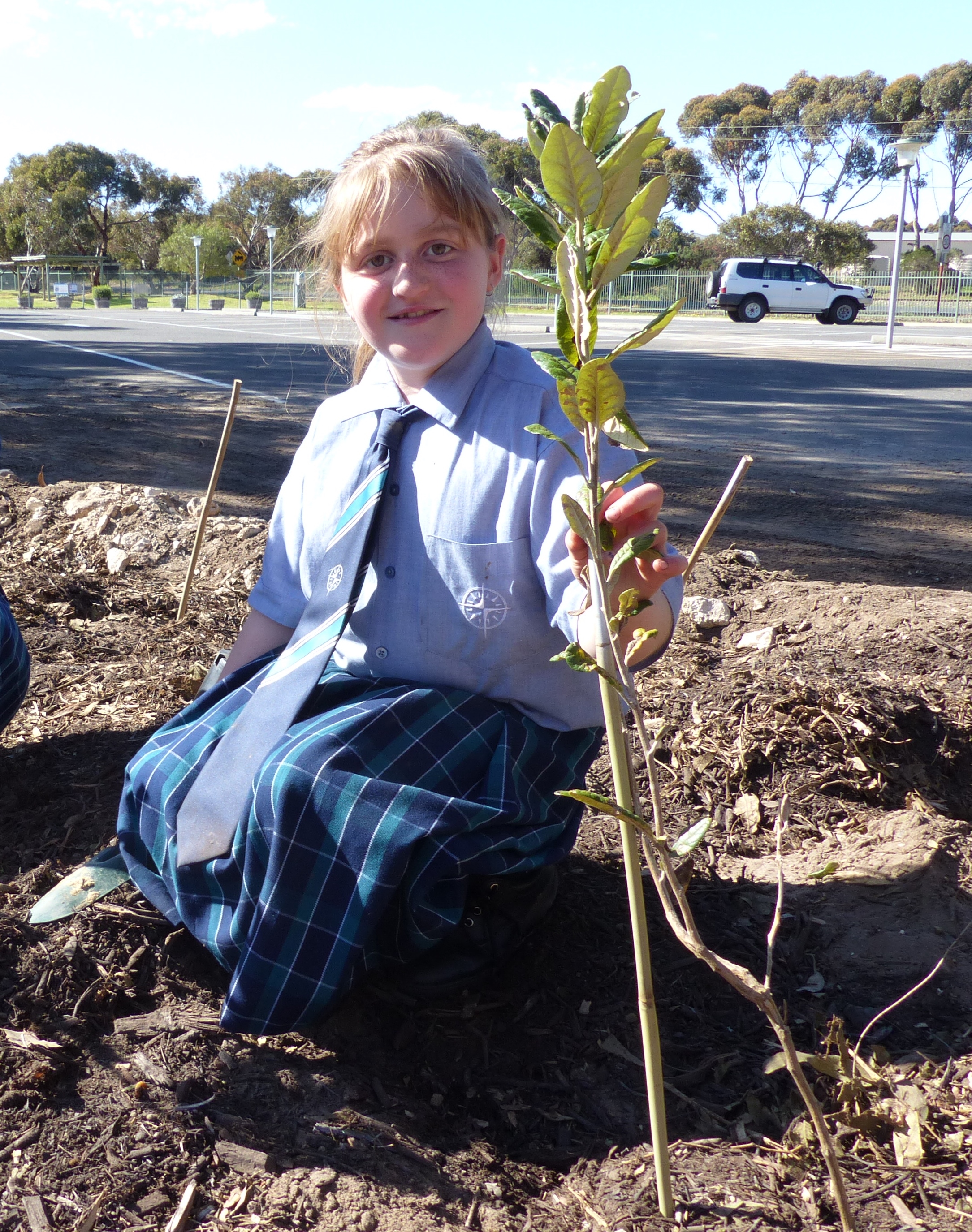
Olearia pannosa Seed Propagation
On Wednesday 6 August Investigator College Year 4 students spent some time looking at the Olearia pannosa seeds with magnifying glasses to check for seed viability. Following this, we planted half of the seeds we were given into tubes. If they all germinate, we will have 100 Olearia pannosa seedlings to plant around our Goolwa Campus and out at our Currency Creek site next year. The remaining seeds will be used to re-seed any that don’t germinate over the next two to three weeks. Hopefully we will also have seed left over to do a second planting later in the year.
We are looking forward to watching them germinate.
Introducing....Olearia pannosa Silver Daisy Bush
Investigator College has been selected to become custodians of the Olearia pannosa Silver Daisy Bush helping to maintain a viable living source of the seed. We aim to study this plant and educate the community about the importance of protecting the Silver Daisy Bush as well as other locally threatened plant species. Students will grow the plants from seed provided by the Adelaide Botanic Gardens and plant them within the school grounds as part of a Butterfly Garden. Over time students will be able to study the Silver Daisy Bush and collect data about the types of insect species which come to visit it. The aim in the future is for seed to be collected, propagated and planted out in other locations ultimately increasing the number of these plants on the Fleurieu Peninsula.
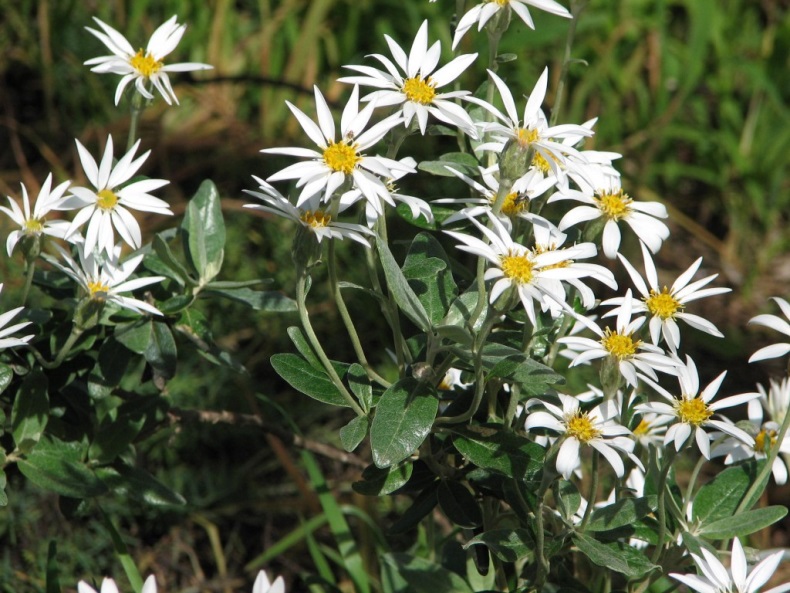
Plant Description
Olearia pannosa Silver Daisy Bush is a perennial shrub growing to a height of 1.5m. It flowers mostly between August and October. Flower heads are white or rarely pale mauve, with a yellow centre. The leaves are an oval shape, twice as long as they are wide. The upper leaf surface is shiny and bumpy and the lower leaf is covered in short hairs.
Seed Viability and Propagation Information
The seeds for our project were collected from near Goolwa Airport not far from our school. This daisy is very rare and many of the small roadside populations remaining are known from the Strathalbyn and Goolwa district. It often occurs in remnants of peppermint box woodland which is considered endangered.
The seeds (achenes) of this daisy are about 6-7mm long and viable seeds often have a purple-red colouring. The viable seeds appear plump when you roll them between your thumb and finger whilst non-viable seeds feel flat and empty. You may see white bristles at the base of the seed which are known as pappus. It can be difficult to collect viable seeds as caterpillars often eat the seeds on the plant as they are ripening.
The seeds of the Silver Daisy germinate reasonably readily without any pre-treatment. The seeds can be sown into seedling trays filled with seed raising mix or directly into tube-stock filled with a quality native mix. If sowing in tube-stock it may be worthwhile sowing two seeds per tube to improve success. Seeds should only be sown about 0.5cm to a 1cm deep, covered and pressed in firm. The seeds will begin to germinate in two to three weeks but may take longer during cooler weather.
Viable Seed
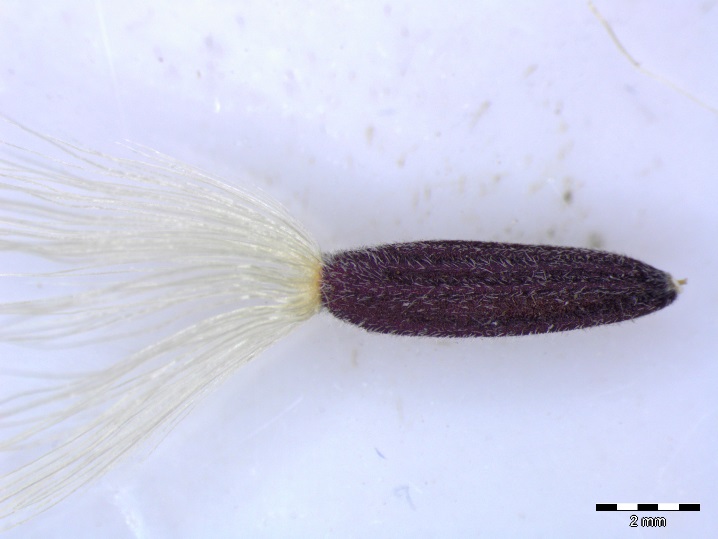
Non-viable seed
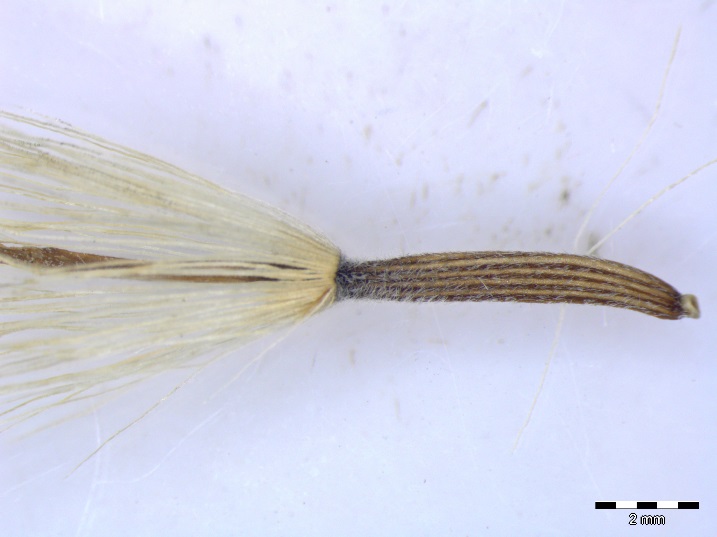
'A Precious Plant for a Precious Mum'
Introduction to the SEEDS Project
At the beginning of Term 2 the Year 4s from Investigator College invited their mother’s into the classroom to participate in the "Precious Plant for a Precious Mum” activity run by Jodie Sommerville (NRM Education Coordinator). This was a fantastic way to introduce the Olearia pannosa threatened plant species, which is our focus plant for the SEEDS program, and to celebrate Mother’s Day.
Students spent time with their ‘precious mums’ learning about why a lot of our native plants have become threatened or endangered. Jodie also shared with us some different ways we can help protect and preserve these different species. One of the ways we can help is by planting the threatened species in our home gardens. Each student was given a seedling of Olearia pannosa, the Silver Daisy Bush, and an information card containing the plants requirements to give to their mums as a Mother’s Day gift. The aim is for the Olearia pannosa seedlings to be planted in home gardens and very carefully looked after, ultimately increasing the number of these plants on the Fleurieu Peninsula. The Year 4s would like to say a big thank you to Jodie Sommerville for spending time with us and organising a wonderful activity.
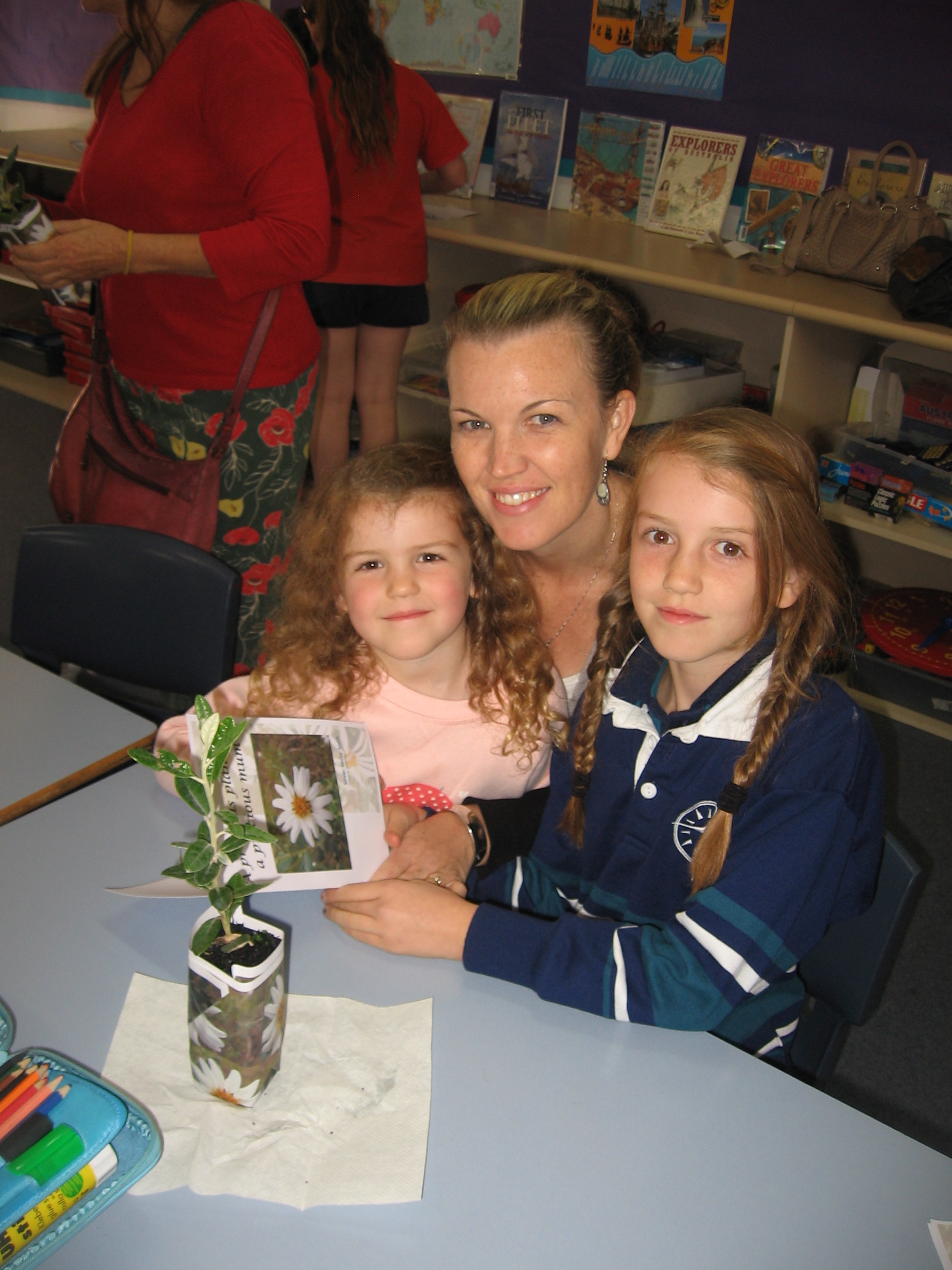
Investigator College Victor Harbor
Plant Species
Olearia pannosa


